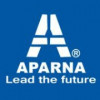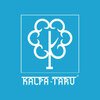Filter interviews by
MJ INFRASTRUCTURE Interview Questions and Answers
MJ INFRASTRUCTURE Interview Experiences
1 interview found
I applied via Approached by Company and was interviewed in May 2023. There were 3 interview rounds.

(1 Question)
- Q1. Mix design and Site related
(1 Question)
- Q1. Mix design and Site related questions
Top trending discussions






Interview questions from similar companies

I applied via Referral and was interviewed before Jan 2021. There were 4 interview rounds.

I have given aptitude test which has 30 questions
(1 Question)
- Q1. Basics of accounting, communication,your joining time.
(3 Questions)
- Q1. What are your salary expectations?
- Q2. Share details of your previous job.
- Q3. Why are you looking for a change?
Interview Preparation Tips
- B.com

I applied via Referral and was interviewed before Apr 2021. There were 2 interview rounds.

(3 Questions)
- Q1. What are your salary expectations?
- Ans.
I am looking for a competitive salary that reflects my skills and experience, ideally in the range of $60,000 to $70,000 annually.
Research industry standards: For a Sales Executive role, the average salary in my region is around $65,000.
Consider my experience: With over 5 years in sales, I believe a salary of $70,000 is justified.
Include performance incentives: I am open to discussing a base salary with performance bon...
- Q2. What are your strengths and weaknesses?
- Q3. Tell me about yourself.
Interview Preparation Tips

I applied via Referral and was interviewed before Aug 2020. There were 3 interview rounds.
Interview Questionnaire
1 Question
- Q1. 1. Tell us about your previous projects 2. Tell us about your previous roles and responsibilities 3. Tell us can you handle pressure
- Ans.
I have led diverse projects, managed teams, and thrived under pressure, ensuring successful outcomes and team cohesion.
Managed a team of 10 in a project to streamline operations, resulting in a 20% increase in efficiency.
Led a cross-functional team to launch a new product, coordinating between marketing, sales, and development.
Handled high-pressure situations during project deadlines, successfully delivering projects o...
Interview Preparation Tips
Usually all the pmc will be wanting approval from the client, so your job is to impress the client not the pmc

I applied via Naukri.com and was interviewed before Jun 2020. There were 5 interview rounds.
Interview Questionnaire
1 Question
- Q1. Many questions about sales.
Interview Preparation Tips

Assistant Manager Interview Questions & Answers
Aparna Constructions and Estatesposted on 2 Mar 2021
I applied via Naukri.com and was interviewed before Mar 2020. There were 6 interview rounds.
Interview Questionnaire
3 Questions
- Q1. 1. Personal and professional questions like job and position required points.
- Q2. Very tuff to face the interview if person not having proper experience.
- Q3. Better for attend the person interview before think and join
- Ans.
Attending an interview helps assess fit, clarify expectations, and build rapport before joining a new role.
Understanding Company Culture: Meeting the team can reveal the company's values and work environment.
Clarifying Role Expectations: Direct interaction allows for questions about job responsibilities and performance metrics.
Building Rapport: Personal connections can ease the transition and foster teamwork once you j...
Interview Preparation Tips

I applied via Recruitment Consulltant and was interviewed before Jul 2021. There were 2 interview rounds.
(1 Question)
- Q1. What is cap rate? How do you calculate it?
- Ans.
Cap rate is a real estate metric used to determine the potential return on investment.
Cap rate stands for capitalization rate.
It is calculated by dividing the net operating income (NOI) by the property's value.
The result is expressed as a percentage and represents the rate of return an investor can expect from the property.
A higher cap rate indicates a higher potential return on investment, but may also indicate higher...
(1 Question)
- Q1. Just a general conversation with the MD.
Interview Preparation Tips

I applied via Referral and was interviewed in Jan 2021. There was 1 interview round.
Interview Questionnaire
1 Question
- Q1. What is your current salary
- Ans.
Discussing current salary can be sensitive; focus on your value and market standards instead of just numbers.
Market Research: It's important to know the average salary for similar roles in your industry and location to provide context.
Value Proposition: Emphasize your skills and experiences that justify your salary expectations, such as specific achievements or certifications.
Negotiation Flexibility: Indicate that whil...
Interview Preparation Tips

I applied via Naukri.com and was interviewed in Dec 2018. There were 3 interview rounds.
Interview Questionnaire
5 Questions
- Q1. Tell me about previous experience
- Ans.
I have 5 years of experience in retail management, overseeing daily operations and leading a team of 15 employees.
Managed daily operations of a retail store
Led a team of 15 employees, providing training and guidance
Implemented strategies to increase sales and improve customer satisfaction
Handled inventory management and merchandising
Responsible for scheduling and performance evaluations
- Q2. Why you want to your current employer
- Ans.
I am drawn to the company's commitment to employee development and growth opportunities.
I appreciate the company's focus on continuous learning and development
I value the opportunities for advancement within the organization
I admire the company culture and values that align with my own
I have had positive experiences with the company's products/services
- Q3. Basic questions related to project management like cost & schedule variance
- Q4. Tell me about Project & your responsibilities on those projects
- Ans.
I managed a project to implement a new customer relationship management system.
Led a team of 10 employees to successfully implement the CRM system
Created project timelines and milestones to ensure timely completion
Collaborated with IT department to customize the system to meet company's needs
- Q5. Tell us about yourself final year project
- Ans.
My final year project was a research study on the impact of social media on consumer behavior.
Researched various social media platforms and their influence on consumer decision-making
Conducted surveys and interviews to gather data on consumer preferences and behaviors
Analyzed the data using statistical tools and presented findings in a comprehensive report
Suggested recommendations for businesses to leverage social medi...
Interview Preparation Tips
Skills: Communication, Body Language
Duration: 1-3 Months

I applied via Naukri.com and was interviewed in Sep 2021. There were 2 interview rounds.
Interview Preparation Tips
MJ INFRASTRUCTURE Interview FAQs
Tell us how to improve this page.
Interview Questions for Popular Designations
Overall Interview Experience Rating
based on 1 interview experience
Difficulty level
Duration
Interview Questions from Similar Companies
MJ INFRASTRUCTURE Reviews and Ratings
based on 5 reviews
Rating in categories
|
Manager
3
salaries
| ₹6 L/yr - ₹7.2 L/yr |
|
Executive Accountant
3
salaries
| ₹2.8 L/yr - ₹3 L/yr |

JLL

CBRE

NoBroker

Lodha Group
- Home >
- Interviews >
- MJ INFRASTRUCTURE Interview Questions








